Full name Francis Arthur Sedgman Australian Open W (1949, 1950) Grand slams won (singles) 5 Name Frank Sedgman Retired 1976 | Role Tennis player Turned pro 1953 Career record 86–39 Weight 77 kg Highest ranking No. | |
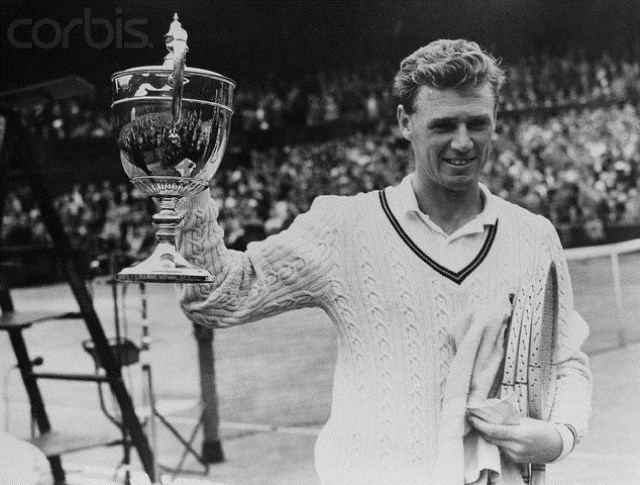 | ||
Plays Right-handed (one-handed backhand) Similar People | ||
Int. Tennis HoF 1979 (member page) | ||
Wimbledon memories frank sedgman
Francis "Frank" Arthur Sedgman, AM (born 29 October 1927) is a retired former World No. 1 amateur tennis champion. In his 1979 autobiography Jack Kramer, the long-time tennis promoter and great player himself, included Sedgman in his list of the 21 greatest players of all time. Sedgman, Kramer wrote, "was as quick as anybody who ever played the game, but he couldn't keep the heat on." Sedgman is one of only five tennis players all-time to win a multiple slam set in two disciplines, matching Margaret Court, Roy Emerson, Martina Navratilova and Serena Williams. In 1951 he and Ken McGregor won the men's doubles Grand Slam. Sedgman turned professional in 1953.
Contents
- Wimbledon memories frank sedgman
- Song for frank sedgman australian open 2011
- Career
- Honours
- Grand Slam record
- References
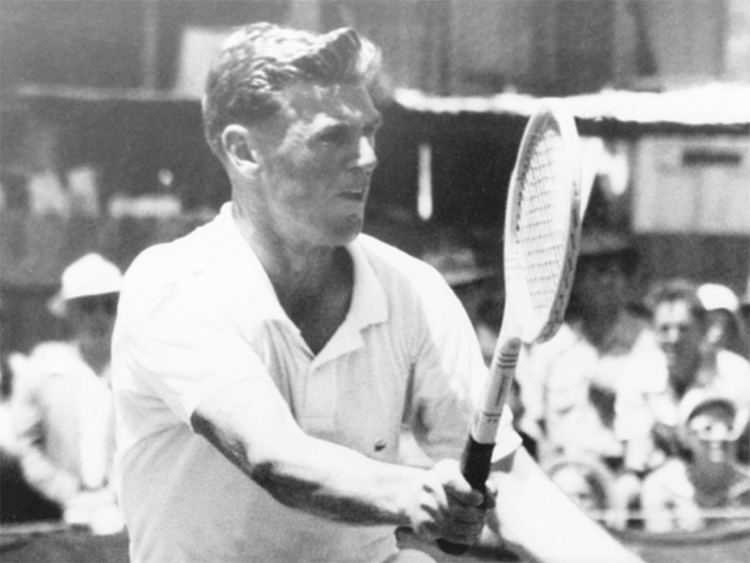
Song for frank sedgman australian open 2011
Career
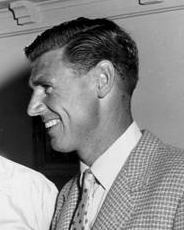
In a five-year span from 1948 through 1952 Sedgman won 22 Grand Slam titles in singles, doubles, and mixed doubles, three fewer than John Newcombe and six fewer than Roy Emerson won over 13-year spans each. In both singles and doubles, Sedgman was the major force in the first three years of the Australian domination of the Davis Cup matches in which they won 15 victories in an 18-year span from 1950 to 1967.
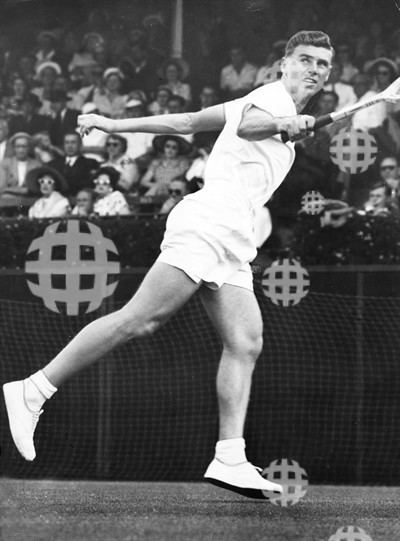
In the days in which the Davis Cup, with its doubles match, had more far importance than it does today, and when doubles in general were more important as a spectator attraction than today, Sedgman was also noted as a particularly good doubles player. Sedgman and his partner Ken McGregor were the only men's doubles team to ever win the Grand Slam in a single year—they won all four majors in 1951. The following year they also won the first three majors, then, at Forest Hills, were upset by a pick-up team of another Australian, Mervyn Rose, and an American Vic Seixas, denying them 8 consecutive Grand Slam victories. According to Rose in a 2005 interview, Harry Hopman, the coach of the Australian team, wouldn’t talk to him for two months afterwards. Sedgman was an extremely fast, slim, 5'11" (1.80 m) right-hander known for his fitness who played the serve-and-volley game that had just been popularised by Jack Kramer. He was one of a number of Australian players who used the Continental grip in which the racquet is held the same way for both the forehand and the backhand. He was particularly known for his volleying and speed at the net. He was also extremely graceful in his footwork and strokes, with a severely classical style that was a model to other players for many years. When asked in 2005 who was the best player he had ever faced, Mervyn Rose replied, "Hopman's pet, Sedgie."
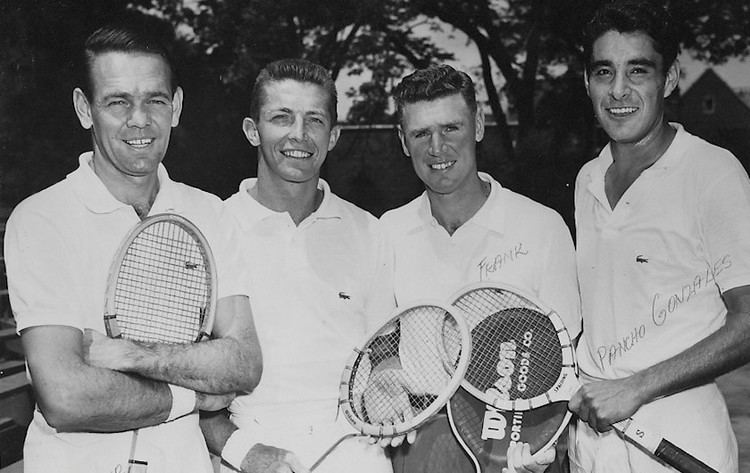
Sedgman, writes Kramer, "was the quickest I've ever seen. He could attack off his second serve, or he could come in behind his little slice backhand – and once Sedg got to the net, forget it, because he was so quick you had to thread a needle to get anything past him. Anything he could get he would put away. Frank Sedgman hardly ever hit a second volley. If he got his racquet on a volley, it was almost always a placement, deep and hard."
Sedgman dominated amateur tennis in 1951 and 1952 when there was no Open tennis. There were no lengthy professional tours during those two years, however, and the best professionals played only a few tournaments among themselves. It is arguable, therefore, that Sedgman was the world's best player over that period. In late 1951, Sedgman was tempted to turn professional for 1952. Harry Hopman, however, led a fund-raising drive via his newspaper column in the Melbourne Herald to keep Sedgman an amateur. Enough money was raised to purchase a gasoline station in the name of Sedgman's future bride. Sedgman remained an amateur for another year but finally turned professional from the start of 1953 and, according to some sources, became the first tennis player, except, perhaps, for Bill Tilden, to make more than $100,000 in a single year. According to Kramer, Sedgman might have made as much as $150,000 during that tour. He was, however, narrowly beaten that first year by the reigning king of professional tennis, Jack Kramer, 54 matches to 41. It was the closest Kramer came to losing an annual tour, but "still he couldn't beat me. He couldn't handle my second serve, and at the end, that was what saved me." Sedgman was slightly ahead, 18 matches to 17, when he began to have trouble with his shoulder and the flu. Kramer won 17 of the next 19 matches, then, when Sedgman had recovered, split the remaining matches to preserve his edge.
Sedgman was the winner of two major titles in professional tennis, which were the Wembley Pro titles of 1953 and 1958. Sedgman was also the runner-up in four more pro majors in the years before Open tennis. He continued to play professionally until his 1976 retirement. His last appearance in the Australian Championships men's singles in 1976 was 30 years after his first appearance (a record span at Australian championships men's singles). According to Kramer, he took the money he made on the tour and "made more money out of squash courts, a confection named Sedgie Straws, and various other enterprises. Since he always stayed in shape, he came back as a big winner on the grand masters tour when he reached forty-five."
Honours
Sedgman was inducted into the International Tennis Hall of Fame in Newport, Rhode Island and was made a Member of the Order of Australia in 1979; in 1985 he was inducted into the Sport Australia Hall of Fame. He received an Australian Sports Medal in 2000.
